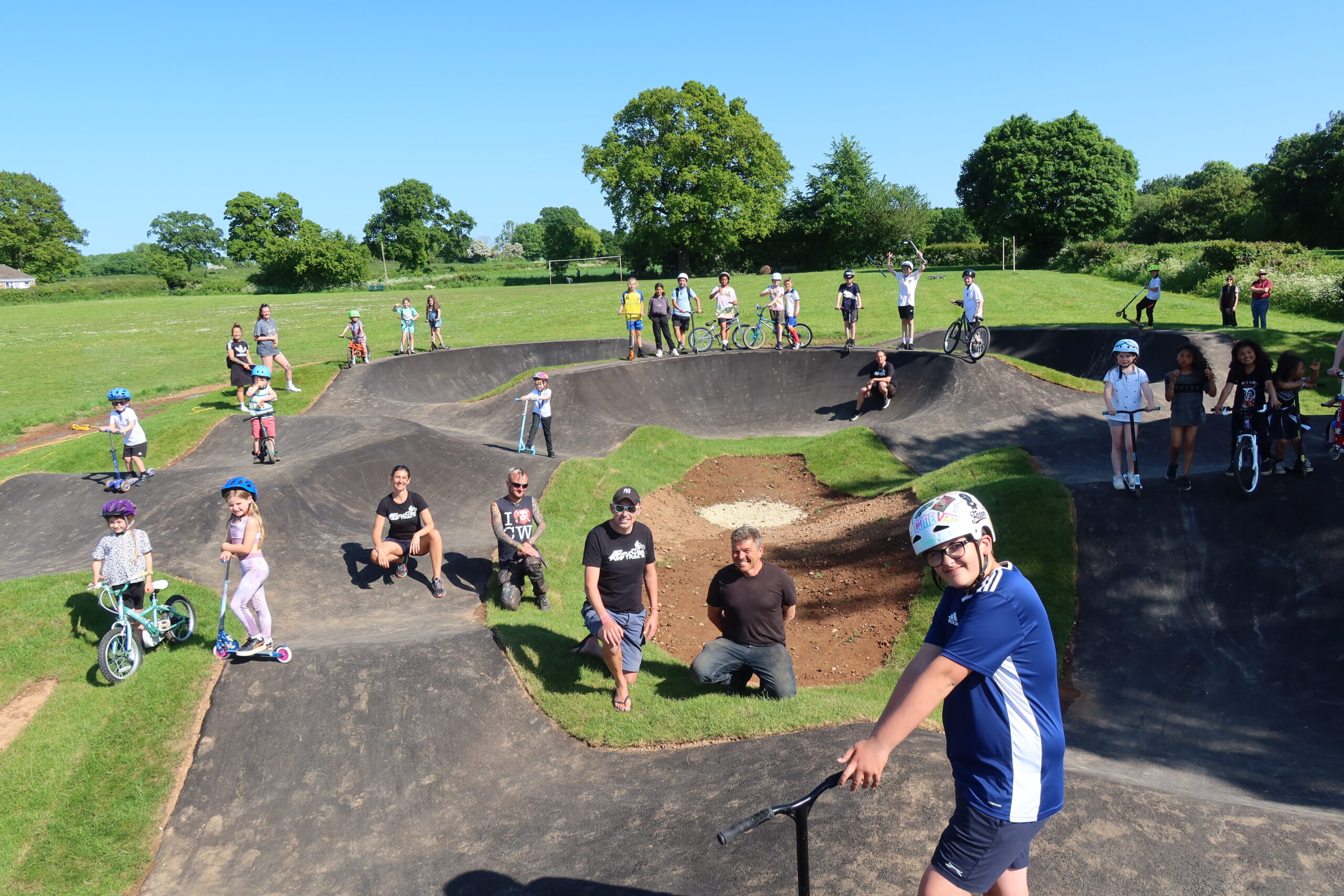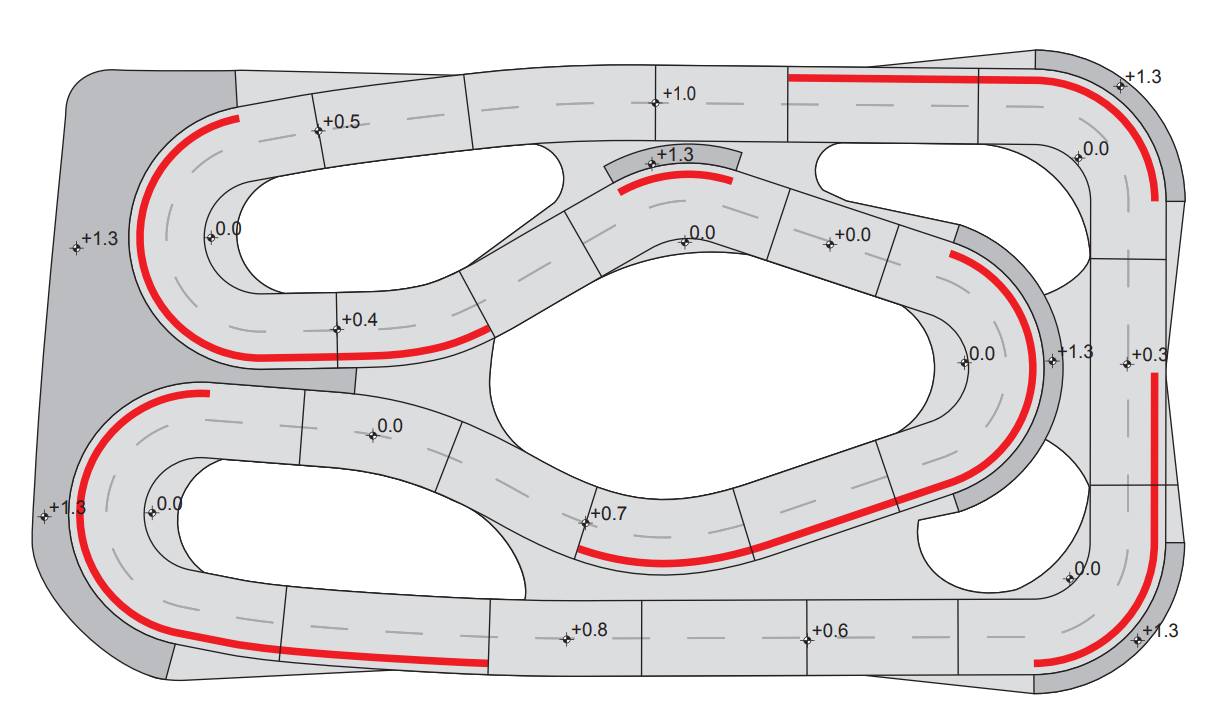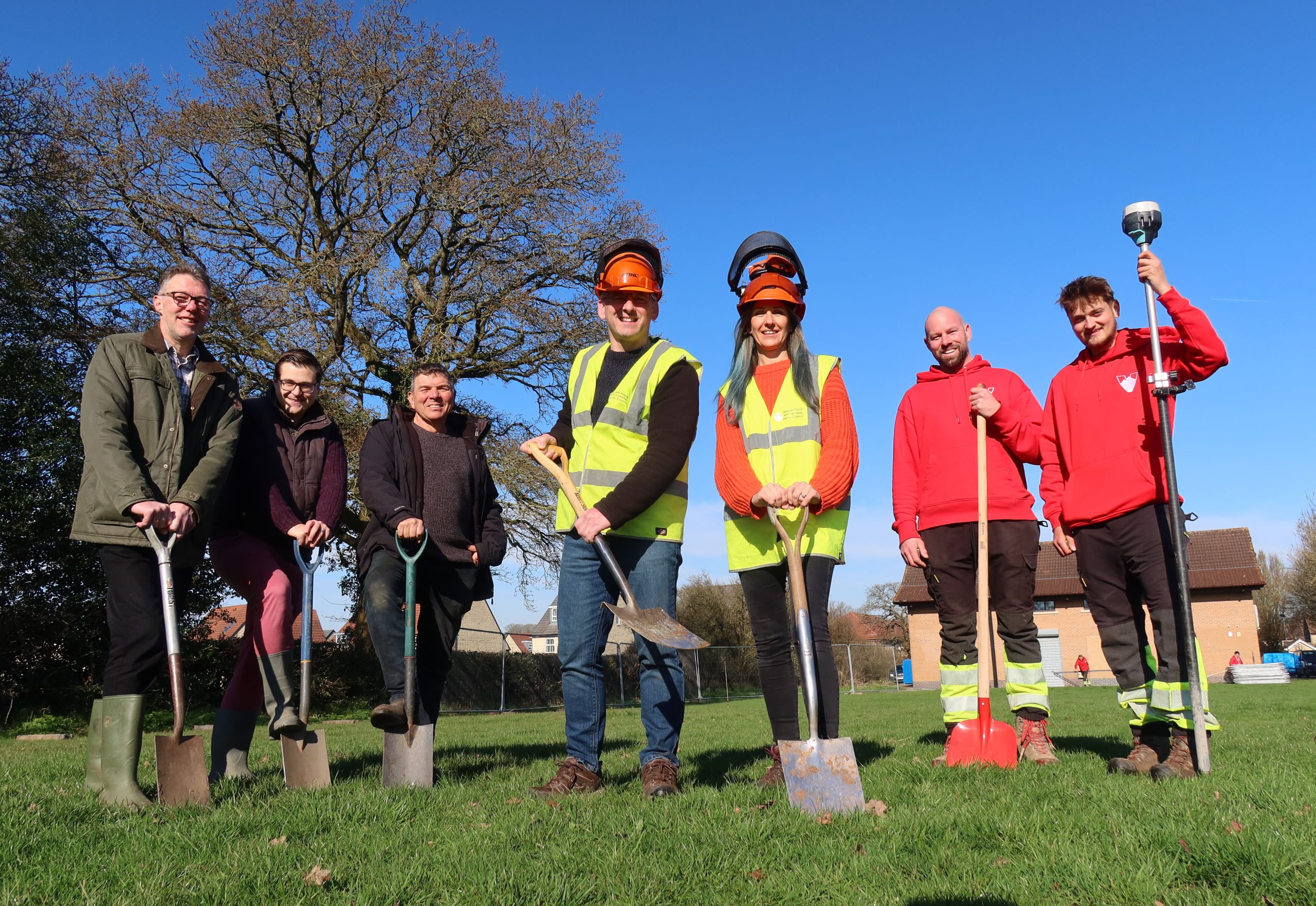Table of Contents
Lone Working
People at risk and how:
Staff (Village Operatives), Contractors, Volunteers.
Our Controls:
- Where possible work with a buddy.
- Carry a fully charged mobile phone. Install a location finding app like what3words: https://what3words.com/
- Lone worker advised to let a close family member or friends know:
- where they are going
- how long they will be
- when they expect to return.
- what course of action to take if the volunteer has not returned after a reasonable length of time.
- Under no circumstances must a worker or others put themselves at risk. If a situation arises that makes them feel unsafe, they should withdraw from the work site.
- Workers to reduce time spent working alone so far as is reasonably practicable.
Risk Rating: | Severity: 3/5 | Likelihood: 2/5 | Risk: Low |
Poisonous Wildlife
People at risk and how:
Staff (Village Operatives), Contractors, Volunteers, Public.
Illness or death from poisoning.
Our Controls:
- Monitor for dangerous plants. Take photos and report to Clerk any sitings.
- Wash hands before eating. Do not touch face or mouth whilst working in risk areas.
- Check location for any dangerous plants before commencing work.
- Use a shearing blade rather than a spinning blade for brush cutting.
- Wear long sleeves, gloves and trousers. Wear PPE equipment including face and eye protection when using machinery.
- Pause any strimming or brush cutting if members of the public are passing.
- Workers to familiarise themselves with the possible dangerous wildlife:
Risk Rating: | Severity: 3/5 | Likelihood: 2/5 | Risk: Low |
Lyme Disease
People at risk and how:
Staff (Village Operatives), Contractors, Volunteers.
Lyme Disease is an infection that causes an inflammatory disease affecting the skin, joints, nervous system, and other organ systems. Symptoms usually appear within a week of infection but may develop up to 30 days after the tick bite. In some cases, there are no symptoms at all.
The most reliable indication of Lyme disease is the appearance of the circular bull’s-eye rash. This is often accompanied by headache and fever, which will usually appear between 3 and 30 days after the bite.
What is already being done to control the measures that need to be put in place?
- If working in a high exposure area (e.g. woodland areas or close to bracken), wear long sleeved shirts and tuck trousers into thick socks. Preferably light coloured clothing should be worn.
- Wear strong/sturdy shoes/boots.
- Wear light-coloured trousers and long sleeve tops.
- All personnel to carry out a thorough “TICK CHECK” during the works, following completion of works and at regular intervals thereafter (infection is unlikely to occur provided tick removed within a 24hr period.
- Check soft, dark, damp area e.g. the groin, back of knees and under the arms.
- Carry a pair of tick tweezers. For example: https://www.lifesystems.co.uk/products/insect-repellents/tick-remover
- If you find a tick remove it immediately by seizing the tick with a pair of tick-specific tweezers as close to the head as possible slowly twisting in an anti clockwise direction. Take care not to pull it apart. Pull slowly and consistently until it lets go. Don’t pull too hard. If you do not have tick tweezers, do not use normal tweezers as you risk squeezing infected fluids into your blood stream.
- Do not try to suffocate the tick with Vaseline or remove it by burning–this could trigger release of Bacteria into the bloodstream.
- Following removal of tick continue to check bite area for Bulls-Eye Rash. If symptoms described appear within 14 days of tick bite, seek medical attention immediately. If possible place the tick in a suitable container to aid diagnosis.
- Preferably, at the end of the working day, wash and tumble dry clothes after working in high exposure areas to remove and kill ticks from the clothing.
What further action is recommended to reduce risks further?
- Carry with you emergency contact details e.g. emergency services.
- Volunteers to ensure they provide up-to-date contact details to the local supervisor and a buddy system is agreed.
- Refer to risk assessment section Lone Working.
- Refer to Tick guidance notes:
Risk Rating: | Severity: 3/5 | Likelihood: 2/5 | Risk: Low |
Weil’s Disease
People at risk and how:
Staff (Village Operatives), Contractors, Volunteers.
Weil’s disease is a water borne disease and is prevalent in areas frequented by rats. Symptoms are similar to flu and include pneumonia, tonsillitis, fever, headaches, jaundice and muscle ache.
Our Controls:
- Cover any cuts, abrasions, bites and scratches with a waterproof plaster and/or dressing
- After working in a high infection risk area, wash and disinfect your hands and forearms with wipes/gel particularly before touching your face, handling food etc.
- Avoid rubbing your nose, mouth or eyes with your hands while you are working.
- The usual incubation period is 2 to 14 days. If you suffer any symptoms, seek medical advice immediately stating that you been working in area where Weil’s disease could be prevalent. Early diagnosis is important.
- Carry hand gel
What further action is recommended to reduce risks further
- Carry with you emergency contact details e.g. emergency services.
- For Volunteers,up-to-date contact details to be provided to the local supervisorand a buddy system agreed.
- Refer to risk assessment section Lone Working.
- Refer to Leptospirosis Precaution guidance notes:
Risk Rating: | Severity: 3/5 | Likelihood: 2/5 | Risk: Low |
Working Near or Close to Gradients
People at risk and how:
Staff (Village Operatives), Contractors, Volunteers, members of the public.
Slips, trips and falls associated with working close to a steep gradient or incline.
Our Controls:
- Before commencing works, visually check working area for steep gradients and inclines. Extreme care to be taken on steeply sloping ground.
- A-Frame ladders should not be used on steep gradients.
- Work area to be dry. Cease works immediately if ground becomes slippery and/or is waterlogged. Works should only recommence once ground has dried and is considered suitable for working.
- Wear suitable stout/strong walking boots with ankle support and well treaded soles.
- Never work on a gradient or incline too steep to safely work or beyond your capabilities.
- If a safe working area cannot be accommodated a safe distance away from the steep gradient or incline, works should cease immediately and advice sought from teh Clerk.
- If working at the base of a steep gradient or incline, visually check ground stability. Do not work in areas immediately below unstable steep slopes. If in any doubt seek advice prior to commencing works.
Risk Rating: | Severity: 4/5 | Likelihood: 3/5 | Risk: Medium |
Traffic and Roadside Working
People at risk and how:
Staff (Village Operatives), Contractors, Volunteers.
- Road traffic collision associated with working in close proximity to highways e.g. un/classified roads.
- Fast flying debris from traffic
- Pollution from extended working alongside road.
Our Controls:
- Wear high visibility jackets.
- Avoid working with back to the traffic.
- Avoid working on narrow pavements.
- Avoid working outside of the 20 to 30mph zones.
- Do not undertake work that involves having your back to the traffic on the edge of a pavement without suitable safety barriers in place.
- Stop work and step back for passing large vehicles to allow safe distance from edge of pavement for overhanging mirrors or unsafe loads. Beware wide vehicle mounting the kerb in constricted locations.
- Use methods of work that minimise the time spent in the high risk locations – for example suitable machinery where possible rather than small hand tools like a broom or spade.
- Wear suitbale PPE – helmet and face protection on faster roads.
What further action is recommended to reduce risks further
If work is required along the road side that carries a risk, it may require a road closure or barrier in collaboration with the district council.
Professional training with district council may be required for roadside projects, or sub contracting to trained personel.
Risk Rating: | Severity: 4/5 | Likelihood: 4/5 | Risk: High|
Weather
People at risk and how:
Staff (Village Operatives), Contractors, Volunteers.
Adverse weather conditions may cause:Hypothermia Heat Stroke, trips slips and falls and electrocution for lightening strikes.
Our Controls:
- Suitable clothing and protection to be worn.
- Plan work around the weather
- Avoid extended periods of work in poor weather
- If weather conditions worsen, cease work
Risk Rating: | Severity: 3/5 | Likelihood: 2/5 | Risk: Low |
Threatening behaviour, verbal and/or physical abuse and dangerous sites
People at risk and how:
Staff (Village Operatives), Contractors, Volunteers.
Risk of stress, trauma or injury from abusive members of the public.
Our Controls:
- Do not put yourself in a position of being physically or verbally abused by an individual who has a history of threatening/abusive behaviour or visiting a dangerous site.
- If asked, explain why you are carrying out the works. Be open and give as much information as you can.
- If a person(s) becomes threatening, abusive or threatens physical violence, do not antagonise them or argue. Politely try to diffuse the situation. Do not allow your safety to be compromised, if necessary leave the site.
- If you fear for your immediate safety contact the emergency services. If in any doubt, pre-dial your buddy/emergency services into your mobile phone and keep your mobile phone with you at all times.
- Workers to notify the Clerk by email of any instances of being threatened, verbally or physically abused.
- If driven to site, park vehicle in a position to aid a speedy escape. Park facing towards and as close as your means of exit as possible.
Risk Rating: | Severity: 3/5 | Likelihood: 2/5 | Risk: Low |
Dust Inhalation from Sanding / Abrasive Paper
People at risk and how:
Staff (Village Operatives), Contractors, Volunteers, Members of the public.
Older paints being maintained may contain lead. Lead can cause serious health problems such as anaemia or kidney disease.
Our Controls:
- Wear PPE, gloves and a good quality P2 face mask.
- DO NOT REMOVE PAINT OR RUST TO BARE METAL.
- Keep removal to a minimum so as to retain well-adhered paintwork as an established protective coat is a better surface for over-painting.
- If the paintwork is in bad condition and needs to be rubbed down before painting, use a wire brush.
- Don’t forget to follow the safety instructions if you do use solvents or water based paint removers.
- When you’ve taken most of the paint off, moisten the surface and smooth it with a water-proof abrasive paper –don’t use dry sandpaper.
- When you’ve finished, put the removed paint and any residues or coverings in a safe container –a sealed plastic bag will do –and put it out with the rubbish.
- Wet wipes and eye wash should be taken on site with first aid kits.
What further action is recommended to reduce risks further
Finger post repainting for volunteers:
- All volunteers to ensure they are wearing the correct clothing and footwear that conforms to PPE regulations.
- Leaving in place paintwork that is in good condition.
- Only strip back old paint if it is flaking, chipping, giving off dust/ particles or is a risk to children
- Limit the amount of dust you create. By using a wire brush and wet abrasive paper.
- Thoroughly wash / clean surfaces and dispose of contaminated waste safely.
- avoid hand-mouth contact when rubbing down fingerpost components
Risk Rating: | Severity: 3/5 | Likelihood: 2/5 | Risk: Low |
Related Documents:
- http://www.templecloud.org.uk/documents/hedge-and-brush-cutting-method-statement/
- http://www.templecloud.org.uk/documents/poisonous-wildlife/
Useful Links:
https://www.somerset.gov.uk/waste-planning-and-land/somerset-fingerpost-restoration-project/ (A comprehensive library of risk assessments and work procedures for workers and volunteers from Somerset DC)






